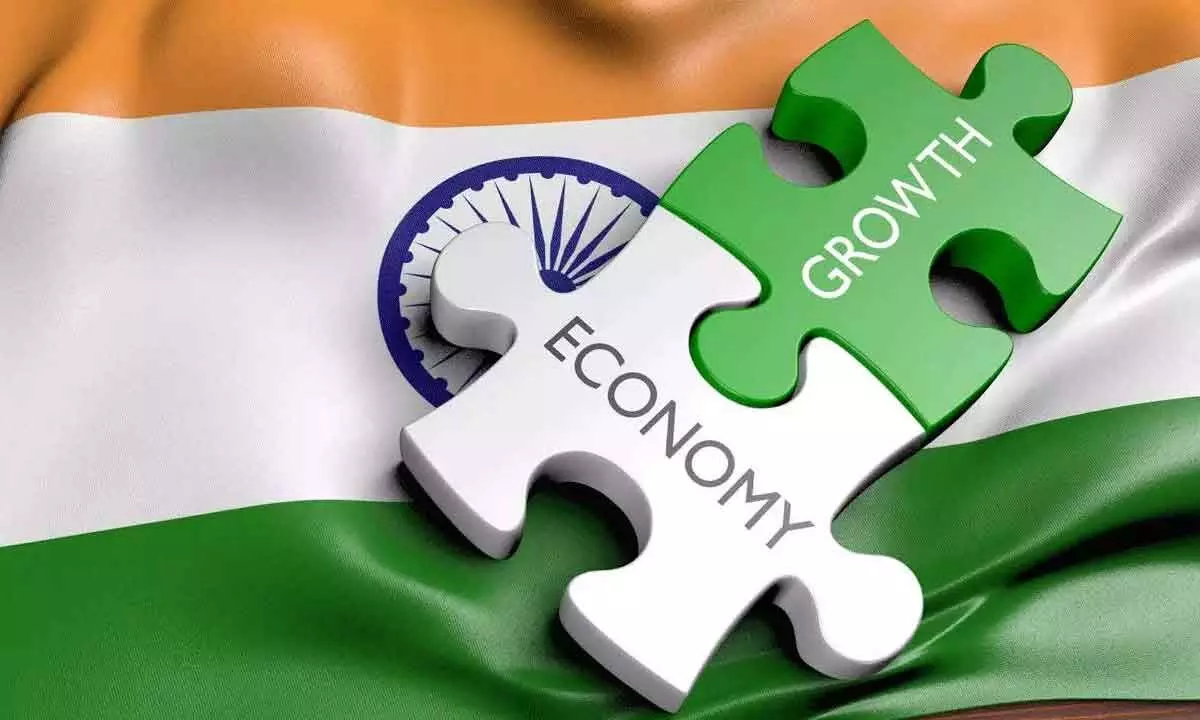The fifth largest economy bears a less than rosy picture
image for illustrative purpose

India’s economic growth in 2023-24 is expected to be 7.3% as per the first advanced estimates released recently by the National Statistical Office (NSO). As the GDP numbers are only until the September quarter, a clearer picture will emerge after the December quarter GDP numbers are released next month. India’s economic growth is not unequal and commentators making such arguments are missing a ‘great migration at the bottom of the pyramid’, according to Soumya Kanti Ghosh, SBI’s chief economist, whose report was released two days after the first advance estimates of India’s 2023-24 GDP gave a higher-than-expected growth of 7.3%. It cited arguments in favour of the prowess of the economy that shows that inequality has declined and households and firms at the bottom of the pyramid are earning and consuming more.
The report claimed that 36.3% of individual ITR filers belonging to the income group of less than `3.5 lakh in AY2015 have moved into the higher group. Of them, 15.3% have shifted to the income group of `3.5 to 5 lakh, and `5 to 10 lakh and 4.2% people shifted in the income group of `10 to `20 lakh. There was a palpable change in income pattern of micro, small and medium enterprises as well, the report claimed. Around 19.5% of micro firms of gross income of up to `10 crore between the years 2013-14 and 2020-21 have become small, medium and large firms. Out of these, 4.8% firms have transitioned themselves into small firms, around 6.1% firms to medium sized firms and around 9.3% firms to large firms. There is a need to look at new indicators or rise in disposable incomes and some of the conventional indicators of the well-being of the non-rich might not be appropriate, the report argued. For example, the rising popularity of food delivery platforms even in smaller cities “indicates vanishing inequality”, the report said. India is the fifth largest economy in the world. One wonders why despite the higher standing, many people shift to greener pastures?
The population is too huge and the size of the economy and per capita is comparatively too small. No wonder we can't see any rural or urban development. Amongst the G20 members, India had the tiniest per capita GDP before AU joined. At $2100 dollars per person per year translates to Rs. 1.70lakh and Rs. two lakh per year or Rs. 14000 per month. According to World Bank estimates, if India wants to be counted as a developed country by 2050 then the per capita income should be around $ 21600 or thereabouts. The population per capita of rich European nations along with the per capita: Germany's population is eight crore/per capita $ 44k; UK seven crore/$ 38k and France seven crore/$ 38k. These statistics indicate that the people there are enjoying higher and qualitatively brighter standards of living compared to a majority of Indians.

